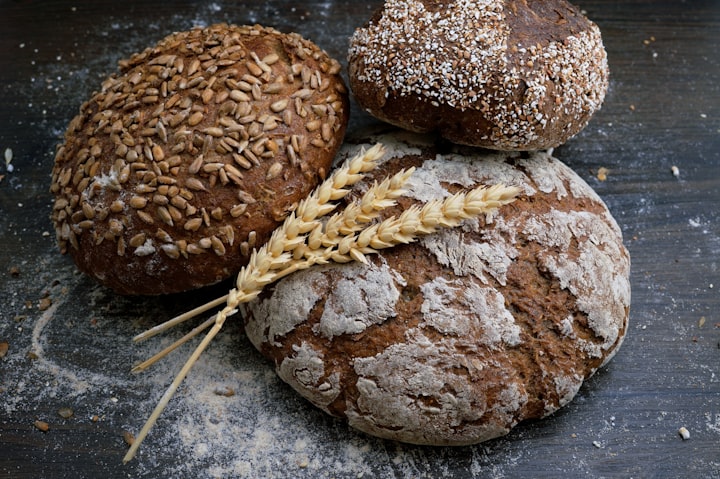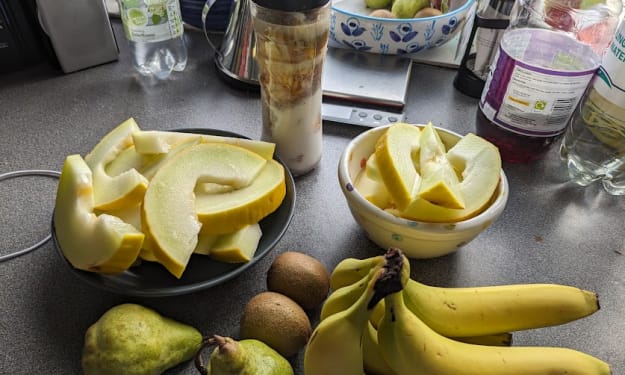The Ultimate Guide to Making Bread: Recipes, Tips, and Myths
The Ultimate Guide to Making Bread: Recipes, Tips, and Myths

Bread is one of the most beloved and ubiquitous foods in the world, with a history that spans thousands of years. It is a staple in many cultures and is enjoyed in a variety of forms, from simple flatbreads to elaborate sourdough loaves. While the process of making bread can seem daunting to some, it is a surprisingly simple and rewarding practice that anyone can master with a bit of practice and patience. In this article, we will explore the history of bread, dispel some common myths about bread making, provide recipes for three different types of bread, and offer tips for making delicious, homemade bread.
History of Bread
Bread has been a part of human civilization for thousands of years, with evidence of bread making dating back to ancient civilizations such as Egypt, Greece, and Rome. The first breads were simple unleavened flatbreads, made by mixing flour and water and cooking them on a hot surface. Over time, techniques for making bread evolved, with the introduction of yeast allowing for the creation of lighter, airier breads.
Bread has played an important role in many cultures throughout history. In ancient Egypt, bread was often used as a form of currency, while in medieval Europe, bread making was an important trade, with bakers forming guilds and developing their own unique recipes. Today, bread remains an important part of many cultures and cuisines, with each region boasting its own unique bread traditions.
Myths About Bread Making
Despite the fact that bread has been made for thousands of years, there are still many myths and misconceptions surrounding the process of bread making. One common myth is that bread making is a difficult and time-consuming process that requires a lot of specialized equipment. However, as bread expert Peter Reinhart notes in his book "The Bread Baker's Apprentice," "bread baking is actually a very simple process that requires only a few basic ingredients and tools."
Another common myth is that bread making requires a lot of kneading. While kneading can help develop gluten and create a more structured loaf, it is not strictly necessary, as long as the dough is given enough time to rise. As baking expert Rose Levy Beranbaum writes in her book "The Bread Bible," "kneading is not essential for bread making. If the dough is allowed to rise long enough, the gluten will develop on its own."
Recipes
Now that we have dispelled some common myths about bread making, let's move on to some recipes! These recipes are for three simple, beginner-friendly breads that anyone can make at home.
No-Knead Bread Ingredients
3 cups all-purpose flour
1 1/2 teaspoons salt
1/4 teaspoon instant yeast
1 1/2 cups warm water
Instructions
In a large mixing bowl, whisk together the flour, salt, and yeast.
Add the warm water and stir until the dough comes together in a shaggy ball.
Cover the bowl with plastic wrap and let the dough rest for 12-18 hours at room temperature.
Preheat your oven to 450 degrees Fahrenheit.
Turn the dough out onto a lightly floured surface and shape it into a round loaf.
Place the dough in a greased Dutch oven and bake for 30 minutes with the lid on, then remove the lid and bake for an additional 15-20 minutes, until the bread is golden brown.
Sourdough Bread
Ingredients:
1 cup active sourdough starter
3 cups all-purpose flour
1 1/2 teaspoons salt
1 1/2 cups warm water
Instructions:
In a large mixing bowl, combine the sour dough starter, flour, salt, and water. 2. Mix until the dough comes together and then knead for 10-15 minutes, until the dough is smooth and elastic.
Place the dough in a greased bowl and cover with plastic wrap.
Allow the dough to rise for 4-6 hours at room temperature or in the fridge overnight.
Preheat your oven to 450 degrees Fahrenheit.
Turn the dough out onto a lightly floured surface and shape it into a round loaf.
Place the dough in a greased Dutch oven and bake for 30 minutes with the lid on, then remove the lid and bake for an additional 15-20 minutes, until the bread is golden brown.
Whole Wheat Bread
Ingredients:
2 cups whole wheat flour
1 cup all-purpose flour
1/4 cup honey
2 1/4 teaspoons active dry yeast
1 teaspoon salt
1 cup warm water
1/4 cup vegetable oil
Instructions:
In a large mixing bowl, whisk together the whole wheat flour, all-purpose flour, honey, yeast, and salt.
Add the warm water and vegetable oil, and mix until a sticky dough forms.
Knead the dough for 10-15 minutes, until it is smooth and elastic.
Place the dough in a greased bowl and cover with plastic wrap.
Allow the dough to rise for 1-2 hours, until it has doubled in size.
Preheat your oven to 350 degrees Fahrenheit.
Turn the dough out onto a lightly floured surface and shape it into a loaf.
Place the dough in a greased loaf pan and bake for 30-40 minutes, until the bread is golden brown and sounds hollow when tapped on the bottom.
Tips for Making Bread
While bread making is a relatively simple process, there are a few tips that can help ensure success. First and foremost, use high-quality ingredients. As cookbook author Alice Waters writes in "The Art of Simple Food," "using good ingredients is the foundation of good cooking, and bread making is no exception." This means using fresh, high-quality flour, yeast, and other ingredients.
Another important tip is to be patient. Bread making is a slow process, and rushing it can result in a less-than-perfect loaf. As bread expert Jim Lahey writes in "My Bread," "patience is key. Allow the dough to rise slowly and develop its full flavor."
Finally, experiment! While these recipes provide a good starting point, don't be afraid to play around with different flours, add-ins, and techniques. As Peter Reinhart writes, "bread making is a lifelong journey of discovery and experimentation."
In conclusion, bread making is a simple and rewarding practice that anyone can master with a bit of practice and patience. By understanding the history of bread, dispelling common myths, and following simple recipes and tips, anyone can enjoy the delicious, comforting taste of homemade bread. So get out your mixing bowls, roll up your sleeves, and start baking!
Bibliography
Beranbaum, Rose Levy. The Bread Bible. W. W. Norton & Company, 2003.
Lahey, Jim. My Bread: The Revolutionary No-Work, No-Knead Method. W. W. Norton & Company, 2009.
Reinhart, Peter. The Bread Baker's Apprentice. Ten Speed Press, 2001.
Waters, Alice. The Art of Simple Food. Clarkson Potter, 2007.






Comments
There are no comments for this story
Be the first to respond and start the conversation.